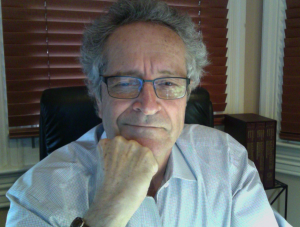Genetic Language Smokescreen
Genetic Language Smokescreen
Genetic Language Smokescreen
Chuck Ruby, Ph.D.
The online magazine Science published a study titled "Shared molecular neuropathology across major psychiatric disorders parallels polygenic overlap," which purports to show genetic underpinnings of several mental disorders. It claims a breakthrough in understanding the genetic causes of these "disorders."
I’m not a geneticist but my read of this research suggests it is another language smokescreen that obscures a simpler, more humane, and non-disease description of human problems. It is a way to continue on the charade of the myth of mental illness through a verbal sleight of hand trick. The genetic and medical terms used sound impressive (e.g., transcriptomic, phenotypes, pleiotropic) but they are euphemisms that refer to far more common, non-disease matters. Yet because they are used, they give the flavor of real disease.
Just a quick look at the study's abstract demonstrates this deceptive ploy:
"The predisposition to neuropsychiatric disease involves a complex, polygenic, and pleiotropic genetic architecture. However, little is known about how genetic variants impart brain dysfunction or pathology. We used transcriptomic profiling as a quantitative readout of molecular brain-based phenotypes across five major psychiatric disorders—autism, schizophrenia, bipolar disorder, depression, and alcoholism—compared with matched controls. We identified patterns of shared and distinct gene-expression perturbations across these conditions. The degree of sharing of transcriptional dysregulation is related to polygenic (single-nucleotide polymorphism–based) overlap across disorders, suggesting a substantial causal genetic component. This comprehensive systems-level view of the neurobiological architecture of major neuropsychiatric illness demonstrates pathways of molecular convergence and specificity.”
- neuropsychiatric disease, polygenic, pleiotropic,architecture, dysfunction, pathology, transcriptomic, phenotypes, perturbations, dysregulation, polymorphism, and molecular convergence and specificity??
Now doesn't that sound impressive? I'm certain that most people will glaze over about half way through it and stop reading, and instead just accept the claims like this headline:
I’ve taken the time to wade through the abstract's wording and replace all that nifty medicaleze and substituting more common and humane terms:
"Behaviors have a genetic substrata. However, we don’t know how that substrata causes those behaviors. We examined cellular RNA activity to see how they varied across different types of behaviors. This showed differences and similarities among those behaviors, suggesting they have a genetic substrata.”
All this research says is there are genes being expressed as people experience the problems we call “mental illness” and that genetic expression is shared to some degrees across different types of problems, but also retains a degree of differences across those problems.
Didn’t we already know this?
Further, don't we already know that any human activity or experience is going to be represented by underlying gene expressions? What does that have to do with verifying something as an illness? Ans. Nothing. Looking from the outside, this smokescreen gives the impression of precision science identifying and confirming that mental illnesses are about genetic anomalies. But on the inside, once the smokescreen is blown away, it is merely pointing out that gene activity is going on during any human behavior.


 Recently a pissing match broke out in the last two ISEPP Bulletins between Ronda E. Richardson who does “peer support” and two of our most stalwart ISEPP members, Ph.D. psychologists Drs. Lloyd Ross and Burt Seitler. In a nutshell: Ronda is envious of her former psychologist who charged $200/hour whereas the going rate for peer support is $15/hour. She demonstrates her envy in the usual fashion, by showing contempt for her former therapist who “gives out purchased wisdom from the pages of a textbook.” Oh my! Burt and Lloyd seem to take umbrage at the idea they work for money and defensively bellow they were not money hogs as proven by the fact that at times they worked “pro bono.” They borrow this term from the legal industry where very, very wealthy law firms offer some free legal representation to worthy causes: makes good public relations and assuages conscience.
Recently a pissing match broke out in the last two ISEPP Bulletins between Ronda E. Richardson who does “peer support” and two of our most stalwart ISEPP members, Ph.D. psychologists Drs. Lloyd Ross and Burt Seitler. In a nutshell: Ronda is envious of her former psychologist who charged $200/hour whereas the going rate for peer support is $15/hour. She demonstrates her envy in the usual fashion, by showing contempt for her former therapist who “gives out purchased wisdom from the pages of a textbook.” Oh my! Burt and Lloyd seem to take umbrage at the idea they work for money and defensively bellow they were not money hogs as proven by the fact that at times they worked “pro bono.” They borrow this term from the legal industry where very, very wealthy law firms offer some free legal representation to worthy causes: makes good public relations and assuages conscience. by Al Galves, Ph.D.
by Al Galves, Ph.D.
 So, you want to do the humanitarian thing, to treat people with respect, care, tenderness, empathy, understanding ? Good for you. Good for us. Good for ISEPP. Somehow, though, I think there is more to it than that.
So, you want to do the humanitarian thing, to treat people with respect, care, tenderness, empathy, understanding ? Good for you. Good for us. Good for ISEPP. Somehow, though, I think there is more to it than that. Chuck Ruby, Ph.D.
Chuck Ruby, Ph.D.
